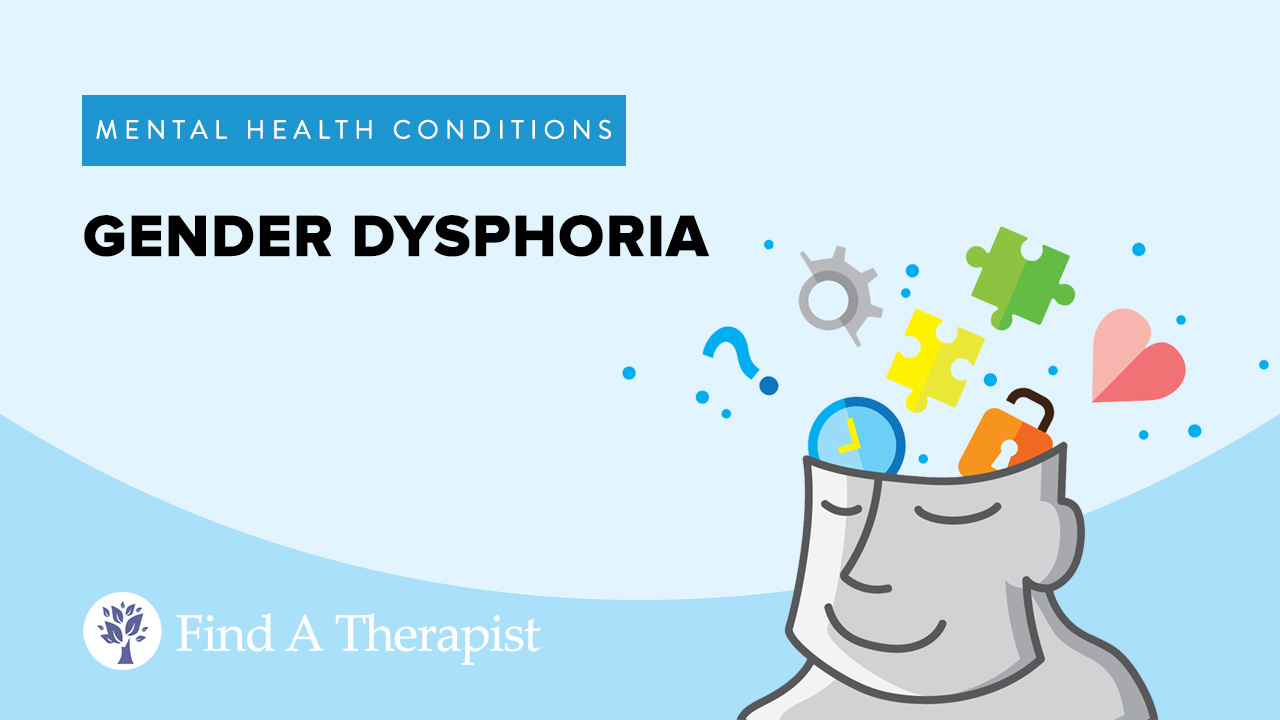Gender Dysphoria
Published on August 17th, 2018
Updated on January 8th, 2024

Gender dysphoria is a mental health condition. It is a condition in which a person suffers from conflict with their assigned gender. Gender dysphoria is not only identifying with a different gender. It is the internal conflict that causes distress for an affected person.
An affected person will experience internal conflict. This conflict is a person’s assigned gender and gender identity. Not everyone who identifies with a different gender will experience distress or discomfort. Those who suffer from stress about their gender may have this condition.
The way a person displays signs depends on their age group. A person may begin to show signs at different stages in life. Children, adolescents, and adults can all begin to show signs of the condition.
Sponsored by

Choose a therapist to work with and start healing with 20% off from BetterHelp.
Click HereExample: A young girl may insist on short haircuts and wearing boy’s clothes. A boy may reject his penis and hope for a vagina or breasts to grow.
Other ways a person may begin to show warning signs include:
- Identifying with celebrities and public figures of the opposite sex
- Role-playing opposite-sex characters
- Choosing opposite-sex friends and playmates
- Wishing or hoping to grow up into the opposite sex
- Developing mannerisms that are most prevalent in the opposite sex
Affected people struggle to feel comfortable with gender-specific expectations. This distress will have a significant impact on day-to-day functioning. Areas of functioning that may be affected include:
- Emotional regulation skills
- Socialization skills
- Relationship skills
- Mental health
- Career and academic performance
- Behavior
Gender dysphoria causes significant distress about one’s gender identity. It does not refer to a person who does not conform to the social expectations of their assigned gender.
Symptoms of Gender Dysphoria
Symptoms of this condition will persist for at least 6 months. Certain symptoms may or may not be present. Some symptoms may be present depending on the age of the affected person.
Gender dysphoria is diagnosable. The condition will exhibit characteristics based on the affected person’s age. It can be seen in children, adolescents, and adults.
Symptoms an affected person may experience include:
- Discomfort or difficulty identifying with assigned gender
- Struggling to fit in with gender role
- Cross-dressing
- Dressing in a way that is not considered reflective of their assigned gender
- Fantasizing or pretending to be the opposite gender
- Particularly seen in children
- A strong discomfort, rejection or disdain for their sexual anatomy, biology or physiology
- Can be particularly distressing during puberty and throughout adulthood
- Significant impairment in major areas of functioning
- Academics, socializing, relationships, career, personal life, family dynamics, etc.
- A desire or preference to be addressed as another gender
- Portraying characteristics of another gender
- Difficulty with coming out to friends and family
- Significant concern or distress about social reaction to patient’s gender identity
- Confusion about preference for gender characteristics
- A strong desire to be treated as another gender
- A strong desire to become another gender
- Difficulty establishing, managing or maintaining relationships as a result of gender identity
Risk Factors of Gender Dysphoria
Different factors may increase the risk of gender dysphoria. One major risk factor is an affected person’s genetic makeup.
A prime risk factor for this condition is genetics. A person may be predisposed to suffer from the condition. This means that the condition may run in their genetic makeup.
An affected person may also have an imbalance in their sex hormones. This may happen in the stages of fetal development. It may also manifest during puberty and follow an affected person into adulthood.
Treatment Options for Gender Dysphoria
It is possible to receive counseling and treatment for this condition. Counseling can help an affected person find relief from the stress they feel. With counseling, an affected person can begin to understand their gender identity.
Then, they can discuss treatment with a mental health professional. The licensed professional will be able to coordinate care with:
- Families
- Doctors
- Other medical professionals
People who seek counseling for this condition may also choose to seek support. Social support can be found in different settings. Such settings include:
Peer support groups
Peer support groups allow people with similar struggles to support each other. Support groups can be especially helpful for those who are beginning counseling.
Support groups are most helpful and safest when they are led by a mental health professional.
Family counseling
Family counseling can be helpful with providing support and education about the condition. Family can learn how to be supportive if they learn about the condition is and how it affects their loved one.
Couples counseling
Some people with gender dysphoria are in committed relationships. This condition can affect relationships, so couples counseling is an option for treatment.
Couples counseling can help a couple learn how to cope with the condition together. It helps each partner identify their needs in the relationship.
Sponsored by

Find an affordable therapist online with 20% off from BetterHelp.
Click Here






Leave A Reply